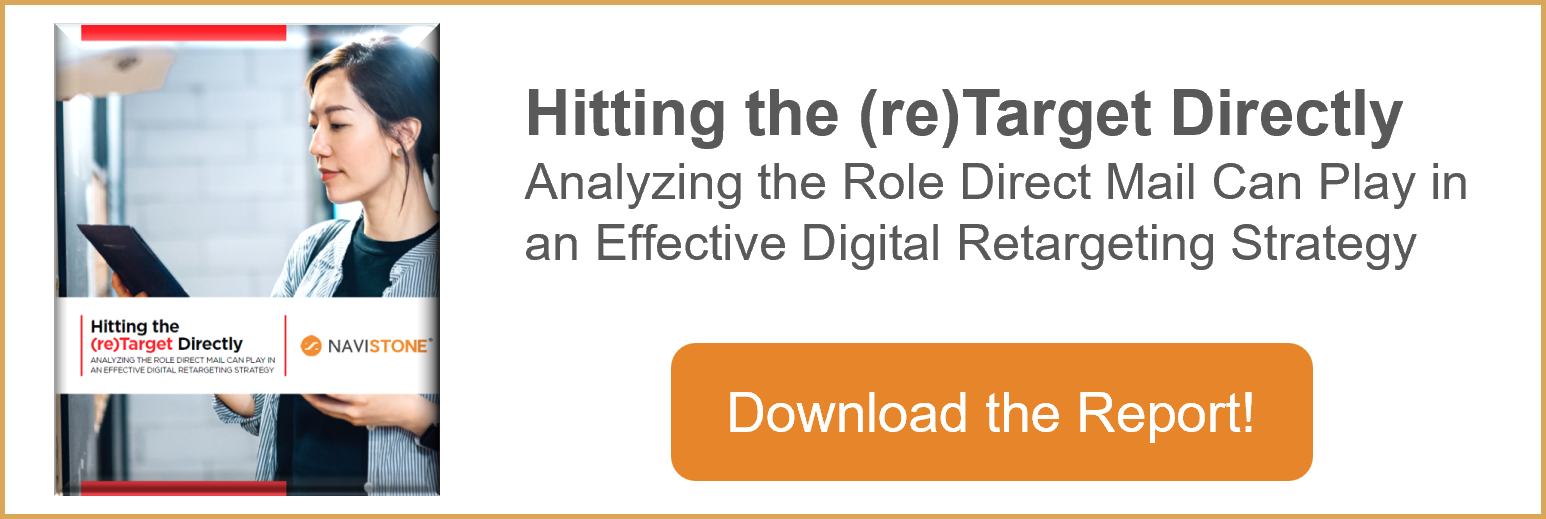
Marketers today have several ways to retarget high-intent consumers who abandon their online and offline carts. Let’s dive into a few examples.
Retargeting Works, But Which Channel Should One Use?
Economists believe in the next 10 years, technology and consumer behavior will advance at the same pace it did over the last 100 years from 1922 – 2022. Whoa. Think about that. We are encountering a period of advancement that none of us alive have ever lived through.
Marketers have the daunting task of reaching consumers at the right time, with the right message, on the right channel. Unpreventable challenges such as supply chain, fraud, technology advancements, economic difficulty, and numerous factors continue to push back the brightest Marketer’s goal line.
One thing remains constant: consumers are looking for the “best” deal and have every resource at their disposal to accomplish that. Purchases aren’t necessarily based on price or quality alone – consumer needs such as necessity, convenience, security, identity, belonging, peer recommendations, obligation, price, quality, and happiness round out the major purchase influences.
Converting Website Abandoners
63% of all purchases begin online. Price comparing, reading reviews, and becoming totally immersed in a product is completely normal for today’s shopper. But even when the right product at the right price that meets the right need is found, 80% of consumers will abandon that purchase online.
Several factors play into why: maybe they were only in price comparing mode; maybe it was only info gathering; maybe an unexpected interruption such as work or family occurred; etc., etc., etc.
This isn’t an “online only” challenge. This year, 96% of consumers will walk out of a brick-and-mortar store(s) at least one time empty handed without making any purchase. The major reasons why are poor product placement, out-of-stock, long lines, and poor customer service.
Today’s successful Marketers execute a buttoned-up Retargeting strategy(ies) to reengage both online and offline cart abandoners. But which is the most effective?
With all the advancements in modern technology, retargeting is relatively a new solution for Marketers. In 2009, Google began testing this technique, calling it remarketing to connote the idea of customized messages like special offers or discounts being sent to users. Google thought of remarketing as more of a specific form of behavioral targeting, the practice under which a person who has visited NBA.com, for instance, may be tagged as a basketball fan and later will be shown ads for related merchandise.
Marketers today have several ways to retarget high-intent consumers who abandon their online and offline carts. Let’s dive into a few examples.
Email Retargeting: Average 3% Conversion
Email retargeting combines Identity Resolution (matching a consumer’s meta tag data from their device to an email address) with Display Advertising. When a consumer shows interest in a product/website/offer but doesn’t convert, Cookie technology identifies that user’s email address, and an offer will be deployed to that email address. Email itself can be a powerful marketing tool, but retargeting can be a challenge. Marketers face issues such as spam, company firewalls, volume of email (the average consumer receives 100+ emails per day), and the fact that consumers have 3-5 email addresses and reaching them on their preferred email address can be difficult.
Display Retargeting: Average .7% Conversion
Display advertising has evolved more in the last 10 years than telecommunications did over a 200-year period. Remember the days when Ad Networks and Site Targeting were the only strategies available? Now are the days of accessing consumer behavior, psychographic/demographic data, and purchase intent in real time. There are several strategies used to reengage a consumer with display, but the most common are the “follow me” ads.
You know how it works. You visit your favorite website, and whatever the reason, you bounce from that website to the next. Suddenly, product/branding ads from “X” company are on your screen across your smartphone, laptop, and tablet. They’re served for a period (based on how long the Marketer chose to serve them), and most of the time you’ll ignore them.
This form of remarketing is attractive because it’s quite easy to set up, low cost of entry, and programmatic. While the idea makes sense, over engagement of these “follow me ads” can cause negative connotation of one’s brand, leading consumers to ignore that brand altogether. Marketers also face the challenges of fraud, ad blockers, firewalls, and other blockades which cause only 50% of display ads to be seen by a consumer. Translation: half of all display ads never make it to a consumer’s eyeballs.
Direct Mail Retargeting: Average 5% Conversion
Direct mail retargeting bridges the gap between online and offline consumer behavior. Once a consumer abandons a website, their identity can be matched back to a residential name and address. Then, a personalized piece of Direct Mail is sent to the consumer’s residential address within a few days, capturing the recency needed to reengage. Direct Mail has a much higher opening and reading rate than both display ads and email, which means that direct mail offers would be more effective in retargeting visitors who have already expressed interest in your brand’s product or service. Additionally, Direct Mail Retargeting not only boosts acquisition performance, but can drive significant increases to a reactivation strategy, driving one-time buyers back to purchase again and again.
Consumers receive an average 3-5 pieces of mail per day in their mailbox, which means Direct Mail will not only be visible, but it will also be digested by the intended recipient. The cost of Direct Mail retargeting may appear to be a challenge for Marketers on the front end. But when intent data is used to identify “who” to mail, Direct Mail drives the highest conversions and ultimately could be the least expensive cost per new customer.


Lookalike Audiences Enhance customer acquisition by identifying high-potential prospects, boosting response rates, and lowering advertising costs.
Retargeting Postcards Double the performance of your direct mail retargeting.
Amplify Recognize unknown visitors who are actually customers. Add 20-40% to your ESP/CRM campaigns.
IQ Mail Retain customers with personalized, timely messages for those opting out of digital channels.






Comments